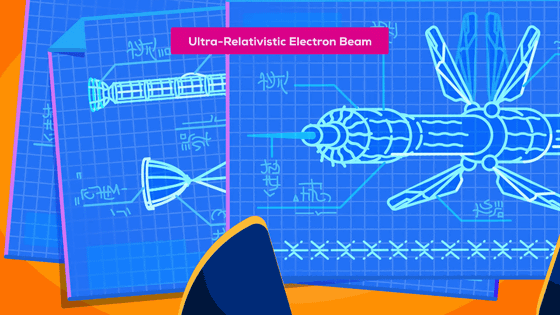What kind of battle will take place in the space war?

If aliens were to attack Earth, an opponent with a civilization that is several steps more advanced than Earthlings who have not been able to find aliens would attack with advanced abilities. Kurzgesagt, a YouTube channel that explains science and theory with animation, has summarized the question ``What kind of attack will be carried out if an interstellar war actually occurs?''
When considering the possibility that aliens could destroy the Earth from many light years away, we often asked questions such as, ``How do civilizations separated by light years wage war?'' ``What kind of destruction would occur in an interstellar war?'' Questions such as 'Will weapons be used?' arise.

Therefore, Kurzgesagt assumes that there are two players in the war: ``humanity'' and the fictional alien ``Smorpian.''

Humanity began developing rockets and nuclear reactors 'very recently' in the history of space.

Smorpian is a fictional alien who lives on a potentially habitable planet discovered around the star

The Smorpians are far more advanced than Earth's civilization, and have recently installed Dyson spheres around stars, acquiring nearly infinite energy.

Using that science, technology and energy, we will finally discover the solar system and the Earth in which we will build a civilization.

If the Smorpians, who want to control the entire universe, tried to attack Earth, even if they launched rockets and weapons close to the speed of light, the attack would take decades to centuries to complete. Further time would be needed for information to be sent as to whether the attack was successful, and if an invasion fleet were to be sent after that, it would take an enormous amount of time, ranging from decades to centuries.

Therefore, Smorpians are more likely to build weapons that completely destroy everything in one blow, rather than a war of aggression.

Kurzgesagt lists three weapons that can be used in interstellar warfare: 'interstellar lasers,' 'relativistic missiles,' and 'ultra-relativistic electron beams,' which can be implemented as extensions of existing technology and theory. We explain what characteristics each has.

First of all, when considering interstellar lasers, there is a possibility that humans can also use them, but Smorpians have an overwhelming advantage. The Smorpians have acquired an enormous amount of energy from their Dyson spheres, which is thought to be 50 billion times more than all the energy generated by humans on Earth. The larger the laser, the longer the range, so Smorpian's interstellar laser, which gets energy from the Dyson sphere, will take several decades to reach Earth and wipe out humanity in an instant.

Smorpian's interstellar laser installs a satellite along the Dyson sphere and bundles the lasers emitted from it to form a large laser. In theory, Smorpian's interstellar laser could be aimed and obliterated from a distance of more than 2 million light years.

Kurzgesagt's second possibility is a relativistic missile weapon that converts the energy of a Dyson sphere into a laser and uses it as energy for missile launches. The missiles would reach speeds as close to the speed of light as possible, be loaded with

The relativistic missile is larger than the world's tallest building on Earth, and has a bell-shaped bottom designed to control magnetism. At the tip of the missile is a human-sized projectile, but beyond that are several layers of shields to further protect the projectile.

Relativistic missiles are launched in large numbers at once, and although they appear slow at first, once the antimatter engines are turned on, they accelerate to 99.999996% of the speed of light.

The relativistic missile launched by the Smorpians takes 42 years to reach Earth. Since light is slightly faster, the light from the launch can be observed on Earth first, but the missile will hit Earth several days after the light is seen.

Relativistic missiles only need to hit once, and when they hit the atmosphere, they emit an intense blue light, and then a continent-sized fireball rains down on the surface. Relativistic missiles, which are thought to have an almost infinite range in space where there is no resistance, are powerful and useful, but they require considerable effort even for the Smorpian civilization to make, and they are slightly less accurate than interstellar lasers. It is thought that it will fall.

This brings us to the idea of a third weapon: an ultra-relativistic electron beam.

Electron beams are sometimes used to remove bacteria from food. Although the electron beam does not have enough energy to burn food, it is a deadly attack on bacteria.

Smorpian may apply this to use larger electron beams. Since normal electron beams quickly diffuse and become harmless, Smorpian will construct an electron beam applying relativity to cover a distance of 42 light years.

Ultra-relativistic electron beams utilize the theory of relativity, which states that ``When the speed of an object approaches the speed of light, time moves slower than its surroundings'' by bringing electrons as close as possible to the speed of light, even more so than with relativistic missiles. To do.

As a result, a physical trick is used that creates a state in which the Earth, which moves at superluminal speed, approaches a slowly moving electron beam. As a result, it is possible to hit the target even while crossing the interstellar distance.

An electron beam that reaches the Earth will not burn up the Earth like an interstellar laser, nor will it cause a large-scale explosion or flames like a relativistic missile. However, it destroys humanity's DNA, kills its cells, and precisely leads to extinction. Electron beams have such high accumulation and penetrating power that even if hidden in deep underground bunkers, it would take days to weeks to reach a lethal dose.

A major drawback common to weapons of interstellar warfare is that when they are used, they emit a light or signature so large that it can reach other stars, meaning that there are dangerous species in space that can attack other stars. It is an act that lets the entire universe know that we are here. Therefore, Kurzgesagt points out that even if Smorpians exist, it is likely that they will remain relatively quiet and just observe Earth humans.

Related Posts:







